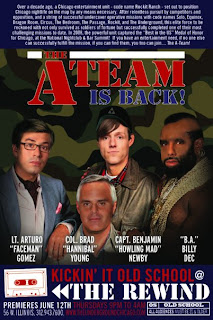When I learned about my mandatory assignment of venturing out into the blogosphere to report on viral marketing, it was very intimidating because I didn't have any experience nor much knowledge of both blogging and viral marketing. But what I learned from this assignment is that both of these things are becoming increasingly important and influential in our culture and society.
I had just become familiar with the growing activity of blogging and gaining an understanding of its increasing influence on society. Elements of legitimate cultural reference such as TV, news, talk shows, magazines, etc. have been using bloggers as reference as well. This is when I realized that with the impact of the internet growing in our society, elements available via the internet would be increasingly influential as well.
This revelation was very inspirational to me, and I look at this phenomenon quite optimistically; by people recognizing and acknowledging "bloggers" opinions, they are simultaneously recognizing the opinions of the general public; the "average Joes and Janes"-- their opinions and thoughts are being broadcast to whoever comes across or searches for it, and by publicizing it on the World Wide Web, makes their opinion visible and recognized by everyone: newscasters, Steve Colbert, and plain Joes and Janes everywhere.
So although I was apprehensive at first to take the plunge into the very open, publicized world of blogging, this realization gave me another optimistic outlook about it; that my opinion could be heard and recognized by either classmates or respectable people in the very industries that I hold to a high regard and hope to be a part of. Enter my blog topic: buzz and viral marketing, two very important modes of advertising not only in the wonderful world of marketing, but to myself as well. I hope to make a career in attracting people to products, services, and/or establishments in unconventional ways that blow their minds. Viral and buzz marketing are two great ways to do that.
In researching current happenings in the buzz and viral marketing industry, I came across patterns, concepts, and themes that contributed to a so-called "how-to" manual of viral marketing that has been developing in my brain. The most evident form of viral marketing is the utilization of the web video, whose popularity can be credited to the web phenomenon YouTube. Many of my blog entries had to do with viral campaigns that predominantly consisted of webisodes or short web clips- like online TV advertisements- such as the
AirTran campaign (my favorite concept), the tourism company webvideo advertising, the Tassimo webisodes, and another type of video viral advertising that is a trend in its own right; viral campaigns for movies.
Within the timespan that I've been writing this blog I have covered two viral and buzz movie campaigns, the
Dark Knight and the
Quarantine campaigns, which are among many others that have happened within the year. This new trend typically utilizes YouTube to post realistic videos relative to the plot of an upcoming movie (ones like the pioneering Cloverfield videos), and ties in movie characters and their own storylines through creating blogs and websites for the characters and/or elements of the movie plot.
Although this approach is incredibly creative and interactive, I wonder whether progressive audience research methods could measure the amount of effectiveness and whether it decreases with the amount of movies that decide to copycat this type of viral advertising. If the opportunity just so presents itself in a job or internship I have in the future, I can utilize the knowledge that I attained throughout this course to find different modes of assessing the effectiveness and creating different types of viral advertising that may have the same effect on the target audience of these videos, but in a different way so as to not be repetitive and therefore receive negative reaction to the campaign.
One tactic of viral and buzz advertising that seems to be prevalent and successful is to keep the viewer guessing or moving along to find more. These movie campaigns always have a sense of mystery about them that makes viewers want to see other clips, visit other websites, and read blogs pertaining to the movie in order to find out more bits and pieces about the plot and to be immersed in the experience. Even a simple reference to a home website in a viral video or interesting banner will impact website traffic, which is the tactic used by
Pepsi's Tava, AirTran, Tassimo, and even
Hillary Clinton!
The last and my personal favorite and most important trend in viral and buzz marketing is humor. As referenced in fellow IMCer, and buzz and viral marketing blogger (with whom I share the same name)
Kristen's blog, 88% of content that people send or pass on to others is of humorous nature. People are impressed and seem to warm up to stereotypically stoic businesses who have the capability of entertaining and getting a genuine laugh out of consumers. My personal theory is that these companies seem more personable, and especially when used in a viral campaign on a medium as personal and accessible as the Internet, they gain an affinity with the public that is otherwise virtually impossible to attain.
All of the trends that I have picked up in my time assessing the viral and buzz industry can almost make it seem like viral and buzz marketing is a trend within itself. The content is always up-to-pace, never dated, yet is so expendable when it comes to the next hot viral campaign. But what people, especially those in the marketing industry, must know is that the internet is not a trend, and it is here to stay. When covering the
success of the online advertising regardless of an economic decline and
the success of viral marketing, I realized that this is a piece of knowledge that I will carry on and utilize in my career in the marketing industry. What this blog and this class taught me is that the internet is the future. Technology is the future. Creativity and progression is the future. And I look at the industry and my contribution to it with these things in mind.


















